Deciding which are the top 10 temples in Japan, a country which has many thousand temples and shrines covering its landscape, is no small task. Yet, visiting one can be a profound experience. Walking through the immaculate gardens of a Japanese temple, or passing through its threshold where pilgrims and worshipers gather, or leaving offerings just like the Japanese do, can give you an insight into the culture, traditions, and history of Japan which you won’t find anywhere else. No Japan vacation is complete without a visit to one of these top 10 temples in Japan.
To experience a religious site is to experience the real cultural center of Japan.
Religion has always been a major influence on the culture of Japan. Elements of the two most popular religions in the country, Shintoism, the indigenous religion of the country, and Buddhism, have had an impact on everything from art in Japan (you’ll notice countless pieces of religious artwork on your travels around the many shrines and temples of Japan) to Japanese politics. Indeed, during the heyday of the Japanese Empire, people believed that the emperor at the time was divine, himself a living god. This is an idea that is deeply connected to Shintoism.
To experience such a religious site on a Japan tour is to experience the real cultural center of classic Japan. If you plan to visit one or more Japanese temples, monasteries or shrines, you’re in luck, for below is a list of the top 10 temples in Japan.
Before we begin: Difference between Shrines, Temples, and Monasteries
Leaning more about the purpose and significance of each place you visit can make . your journey all the more rewarding.
- Shrines in Japan, are almost exclusively Shinto, and are dedicated to the worship of a single spirit or deity. Shintoism is a religion built on ceremonies and rituals, which take place within the shrines.
- Temples in Japanese are Buddhist places of worship. Buddhism may not have originated from Japan (like Shintoism does), but about 40% of the population of Japan are Buddhist with beliefs and practices of this religion deeply ingrained in everyday life.
- Monasteries in Japan, like temples, are usually also Buddhist. Some forms of Buddhism are monastic, largely practiced by monks or nuns in monasteries. In places such as these, monks study, live, and worship. Many of these are open to the public and you can choose to stay in a Japanese monastery too!
Travel Tip: There is no formal dress code for visitors to Japanese temples and monasteries. However, it is important to take your shoes off before entering Buddhist temples. Normally traditional sandals are available at the entrance for you to borrow.
Discover our list of top 10 temples in Japan – bold, beautiful and historic, these may just take your breath away!
Top 10 Temples in Japan
10. Hida-Sannogu Shrine in Takayama
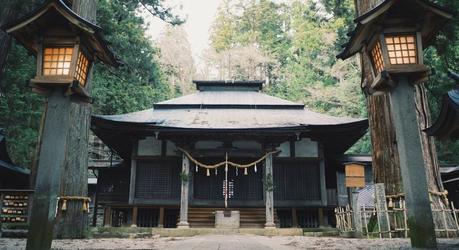
The Hida-Sannogu is shaded by tall trees that seem to dwarf it. Aside from its natural beauty, the shrine is most known for its role in the Shinto Sanno Matsuri festival, one of the three most important festivals in Japan. Performed for centuries, the festival includes a long parade that snakes through Tokyo, culminating in a ceremony at the historic Hie-Jina shrine in Tokyo. The shrine also houses famous marionettes used in the festivities. While it’s much more modest than some on this list, a visit can make for a nice change of pace if you’re in the area.
9. Hasedera Temple in Kamakura
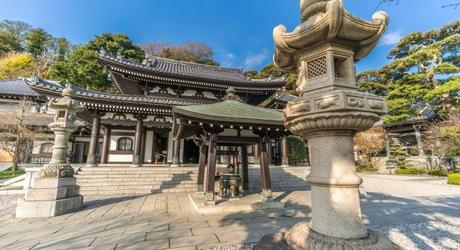
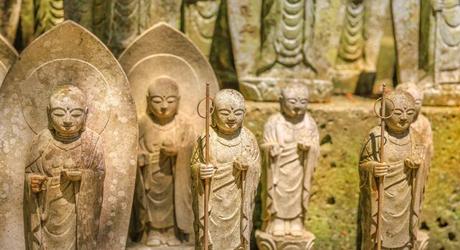
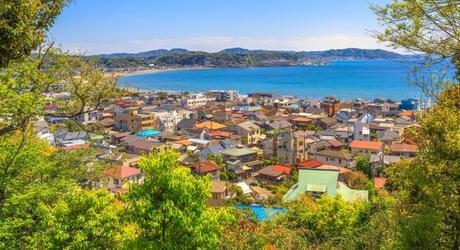
At the bottom of the hill is an old, classic Japanese garden for you to explore and unwind in.
Hasedera Temple belongs to the Jodo sect of Japanese Buddhism, dedicated to the Goddess of Mercy. The temple is famous for housing a tall eleven headed wooden sculpture of the goddess. As the story goes, many hundreds of years ago, a monk carved twin sculptures from a camphor tree. While one was enshrined in Nara city, the other was set adrift to find its own place in the world. This second statue washed up near Kamakura and a temple was built for it. Thus, to look at the statue is to witness a real Japanese legend firsthand!
At the small museum within the temple complex you can see treasures of Japanese Buddhism and learn about the history of the temple. Then enjoy a meal or a drink in the restaurant, before soaking in the wonderful view of Kamakura from your vantage point. At the bottom of the hill is an old, classic Japanese garden for you to explore and unwind in.
8. Enryaku-ji in Kyoto
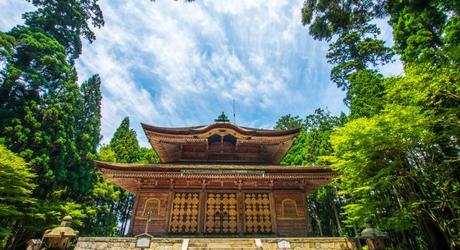
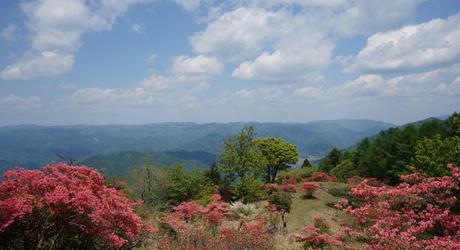
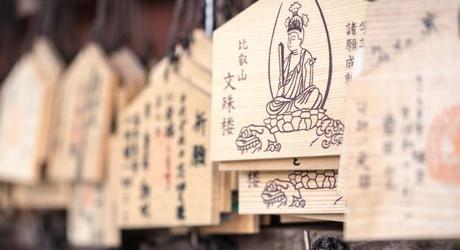
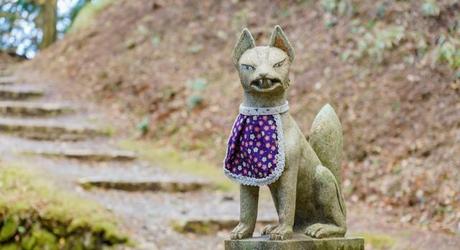
Enryaku-Ji is a grand Buddhist Monastery located in the mountains of eastern Kyoto. It belongs to the Tendai sect of Japanese Buddhism and is one of the top Buddhist sites in Japan. A number of the most important and influential Buddhist monks and scholars lived, studied, and worshiped here. So, if you are interested in Japanese cultural history or Buddhist history, it’s an absolute must-visit!
Travel tip: Today the monastery complex is split into three areas: Todo, Saito, and Yokawa, each connected by a series of scenic walking routes. Seeing all three areas is recommended, as some are quieter than others and offer contrasting and enriching experiences.
7. Meiji Jingu Shrine in Tokyo
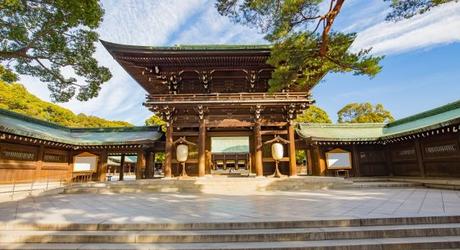
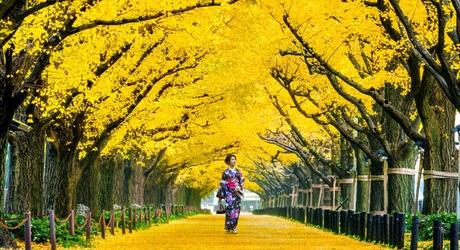
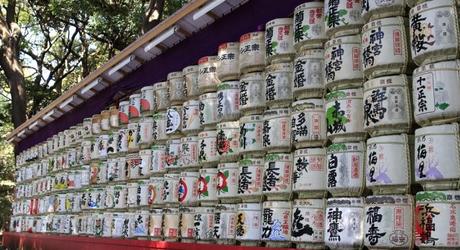
The Meiji Jingu in Tokyo is a shrine dedicated to the spirits of Emperor Meiji and the Empress Shoken. This shrine was originally constructed in 1925, six years following the death of the empress (Emperor Meiji had died earlier). It stands in a forested area of Yoyogi park, which provides a wonderful place to retreat to and relax after the hustle and bustle of Tokyo. As you approach the shrine, you’ll notice a large Torii gate, which is often found in Shinto shrines. The forest around it is composed of thousands of trees donated to the shrine from worshipers all over the country.
Travel tip: Visit on the first day of the new year and you can experience Hatsumode, the first prayers at a shrine in the year. If you don’t like crowds, be warned; at Hatsumode, a million people visit the shrine. But this is a key date in the Shinto Calendar, and if you are looking to experience religious life in Japan, it is not to be missed.
6. Kiyomizu Temple in Kyoto
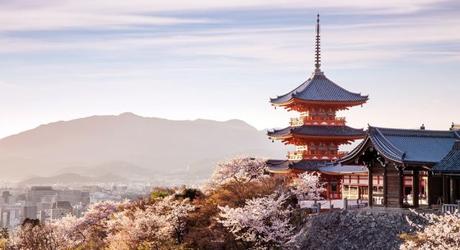
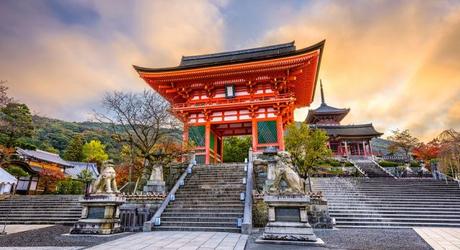
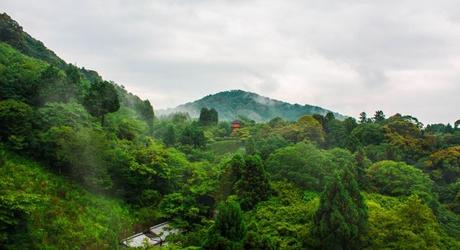
Though this temple is located well within eastern Kyoto, it peeks out through lush green woodland, and pink cherry blossom. Drink from the small, clean waterfall at the bottom of the temple – its waters are believed to possess many spiritual benefits such as longevity, success, and love (drinking too much is seen as greedy!). The temple is actually named after the waterfall; its name “Kiyomizu” means “pure water”. Just off the main hall is a large wooden stage which gives you a picturesque view of Kyoto and the beautiful scenery around you. It is truly a peaceful place to visit during your Japan holiday.
5. Fushimi Inari Taisha Shrine


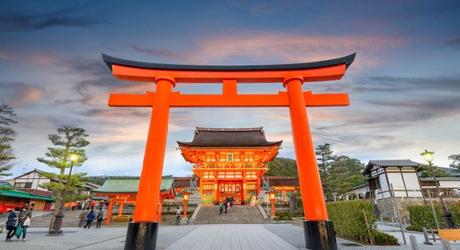
The Fushimi Inari Taisha is also located in Kyoto. This shrine, in particular, is famous for its tunnel of red Torii gates, which lead to the main complex. The shrine is located at the foot of Mount Inari – a part of the shrine’s grounds.
The main walk to the top of the mountain is a pilgrimage route, and walking up it, you’ll likely see dozens of small statues and smaller shrines. Much of the route is under the cover of a long row of Torii gates. Hiking up and back may take some time and effort but combining this with a visit to the shrine can make for a great day out. What’s more, at the top of the mountain, you’re rewarded with a grand view of Kyoto.
4. Classic Japan at the Itsukushima Shrine
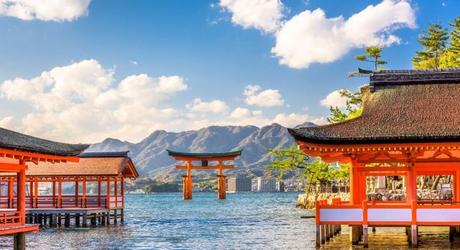
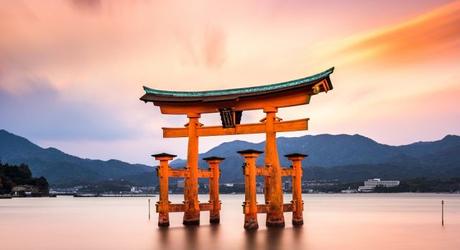
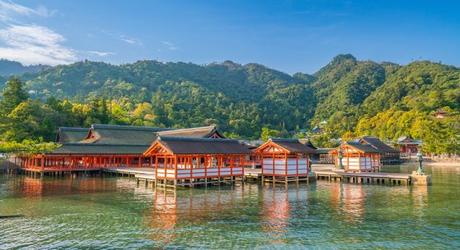
It’s famous Torii gate appears to almost float on the water during high tide like a mystical island.
The Itsukushima shrine in Hiroshima is visually rather striking. It constructed on a small inlet, a few meters from the coast. This unique location ensures that the shrine’s red color contrasts brilliantly with the blue seawater, and the green woodland nearby. When you look at it from the mainland shrine complex, it’s famous Torii gate appears to almost float on the water during high tide like a mystical island. Interestingly, the way the shrine appears to almost float, isn’t just a piece of design excellence, but was a conscious attempt by the original architect and builders to avoid disturbing the spirits who are said to inhabit the island – this shrine itself is dedicated to these spirits!
Since 1996, the shrine has been a UNESCO World Heritage site due to its history, its beautiful and harmonious architecture and its impact on Japanese culture. Today you can explore the shrine from the network of wooden walkways connecting all of the buildings in the complex.
Travel tip: can also explore the site from the comfort of a cruise which passes by the famous shrine.
3. Nezu Shrine in Tokyo
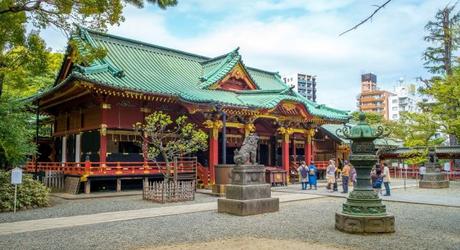
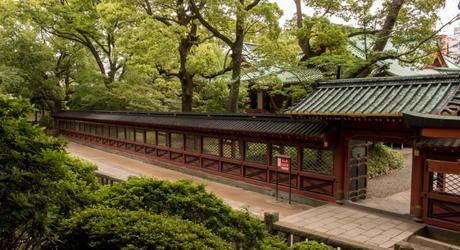

The Nezu shrine of Tokyo is located in the center of a gorgeous Japanese garden. It’s one of the oldest shrines in the city, dating back to 1705, and is almost certainly the most beautiful. You can approach it through an avenue of Torii gates which lead, through the trees, to the shrine proper. The building is in true Japanese style, with a pleasing juxtaposition of red, gold, and green, and a still water pond of Japanese carp at the foot of the shrine. Even to those not interested in Japanese religion or culture, visiting the shrine is a must due to its sheer beauty.
Travel Tip: Every April, people from across Tokyo and beyond flock to the shrine for the Bunkyo Azalea Festival to see blooms in vibrant shades of pink all around.
2. Senso-ji Temple at Asakusa in Tokyo
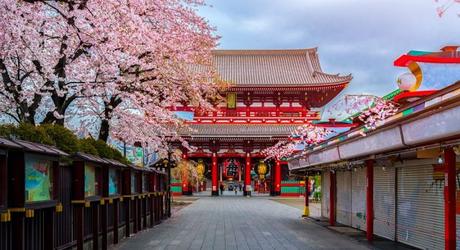
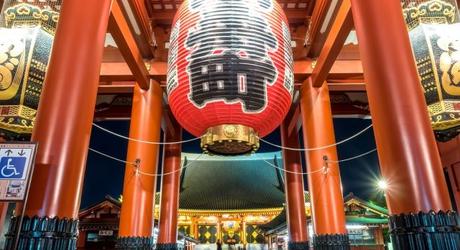
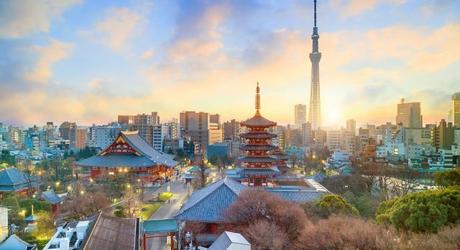
Over a thousand years old, the Senso-Ji temple in Tokyo is the oldest in the city and certainly the most famous. For many centuries, pilgrims from all over Japan have flocked to this site. Most of the modern structure was rebuilt after World War II. Despite this, it remains a place of outstanding historic and cultural significance – its reconstruction was seen as a metaphor for the country’s rebirth following the war. Much of this functioning Buddhist temple complex in Tokyo is open to the public and is a joy to explore. Most of the buildings are bright crimson in color and each is a masterpiece of Japanese architecture.
Travel Tip: Thanks to its central location, the Senso-Ji can be very easily accessed from anywhere in Tokyo.
1. Kinkakuji Temple or the Golden Pavilion in Kyoto
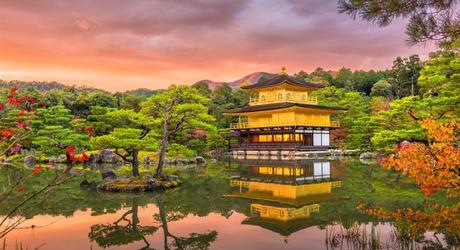
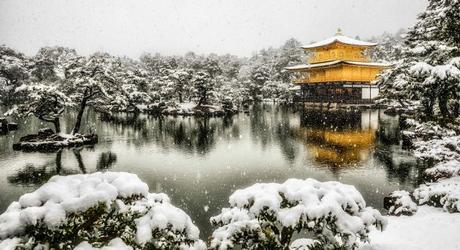
You’ll notice that each floor has an entirely different architectural style. It seems the more you look at it, the more you see.
The shining Kinkakuji Temple in northern Kyoto rests on the bank of a large pond and is flanked by lush trees and bushes, giving it a sense of tranquility. When you approach, your eyes will be drawn to the way the second and third floors are literally covered in gold which shines and glistens in the sun. Looking closer you’ll notice that each floor has an entirely different architectural style. It seems the more you look at it, the more you see. Although some parts of the temple are closed to the public, even simply walking around it and discovering the lush greenery around you is more than worth the effort.
Visit the most beautiful and historic monasteries, shrines and top 10 temples in Japan at your own pace. With a luxury tour of Japan tailored to you, immerse yourself in the culture and history of these great sites.
